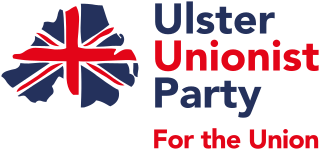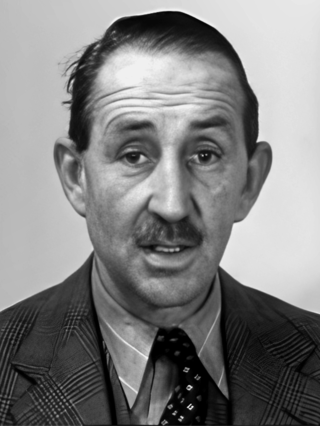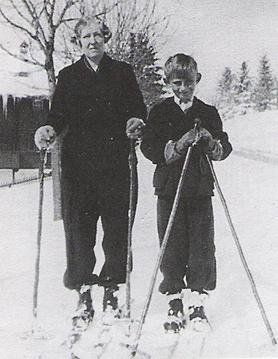
The Ulster Unionist Party (UUP) is a unionist political party in Northern Ireland. The party was founded in 1905, emerging from the Irish Unionist Alliance in Ulster. Under Edward Carson, it led unionist opposition to the Irish Home Rule movement. Following the partition of Ireland, it was the governing party of Northern Ireland between 1921 and 1972. It was supported by most unionist voters throughout the conflict known as the Troubles, during which time it was often referred to as the Official Unionist Party (OUP).

The prime minister of Northern Ireland was the head of the Government of Northern Ireland between 1921 and 1972. No such office was provided for in the Government of Ireland Act 1920; however, the Lord Lieutenant of Ireland, as with governors-general in other Westminster Systems such as in Canada, chose to appoint someone to head the executive even though no such post existed in statute law. The office-holder assumed the title prime minister to draw parallels with the prime minister of the United Kingdom. On the advice of the new prime minister, the lord lieutenant then created the Department of the Prime Minister. The office of Prime Minister of Northern Ireland was suspended in 1972 and then abolished in 1973, along with the contemporary government, when direct rule of Northern Ireland was transferred to London.

Terence Marne O'Neill, Baron O'Neill of the Maine, PC (NI), was the fourth prime minister of Northern Ireland and leader (1963–1969) of the Ulster Unionist Party (UUP). A moderate unionist, who sought to reconcile the sectarian divisions in Northern Ireland society, he was a member of the Parliament of Northern Ireland for the Bannside constituency from 1946 until his resignation in January 1970; his successor in the House of Commons of Northern Ireland was Ian Paisley, while control of the UUP also passed to more hard-line elements.

Basil Stanlake Brooke, 1st Viscount Brookeborough,, styled Sir Basil Brooke, 5th Baronet between 1907 and 1952, was an Ulster Unionist Party (UUP) politician and paramilitary leader who became the third Prime Minister of Northern Ireland in May 1943, holding office until March 1963.

The Senate of Northern Ireland was the upper house of the Parliament of Northern Ireland created by the Government of Ireland Act 1920. It was abolished with the passing of the Northern Ireland Constitution Act 1973.

Robert Michael James Gascoyne-Cecil, 7th Marquess of Salisbury, Baron Gascoyne-Cecil,, is a British Conservative politician. From 1979 to 1987 he represented South Dorset in the House of Commons, and in the 1990s he was Leader of the House of Lords under his courtesy title of Viscount Cranborne. Lord Salisbury lives in one of England's largest historic houses, the 17th-century Hatfield House in Hertfordshire, and currently serves as Chancellor of the University of Hertfordshire.
Events in the year 1973 in Ireland.
Events from the year 1957 in Ireland.
John Warden Brooke, 2nd Viscount Brookeborough, PC (NI) was a Northern Irish politician. He was the son of Basil Brooke, 1st Viscount Brookeborough, third Prime Minister of Northern Ireland.

Brookeborough is a village in County Fermanagh, Northern Ireland, at the westerly foot of Slieve Beagh. It lies about eleven miles east of Enniskillen, just off the A4 trunk road, and about five miles west of the County Tyrone boundary. It is situated in the civil parish of Aghavea and the historic barony of Magherastephana. It is situated within Fermanagh and Omagh district.
The border campaign was a guerrilla warfare campaign carried out by the Irish Republican Army (IRA) against targets in Northern Ireland, with the aim of overthrowing British rule there and creating a united Ireland. It was also referred to as the "resistance campaign" by some Irish republican activists. The campaign was a military failure, but for some of its members was justified as it kept the IRA engaged for another generation.

Arlene Isobel Foster, Baroness Foster of Aghadrumsee, is a British broadcaster and politician from Northern Ireland who served as First Minister of Northern Ireland from 2016 to 2017 and from 2020 to 2021 and as Leader of the Democratic Unionist Party (DUP) from 2015 to 2021. She was the first woman to hold either position. Foster is a Member of the House of Lords, having previously been a Member of the Legislative Assembly (MLA) for Fermanagh and South Tyrone from 2003 to 2021.
A list of the Lord Lieutenants of Fermanagh, located County Fermanagh of Northern Ireland, U.K.

Alan Henry Brooke, 3rd Viscount Brookeborough,, is a Northern Irish peer and landowner. He is one of the 92 hereditary peers who remain in the House of Lords; he sits as a crossbencher. He is the current Lord Lieutenant of Fermanagh.
Events during the year 1973 in Northern Ireland.

The Rt Hon. Dame Dehra S. Parker, GBE, PC (NI), was the longest serving female MP in the House of Commons of Northern Ireland.
Cynthia Mary Brooke, Viscountess Brookeborough, was a British peeress and the wife of the first Viscount Brookeborough, Prime Minister of Northern Ireland from 1943 to 1963.
The Brookeborough ministry was the third Government or Executive Committee of the Privy Council of Northern Ireland. It was led by Basil Brooke, who was Prime Minister from 1 May 1943 to 26 March 1963.

Lisnaskea was a constituency of the Parliament of Northern Ireland. It was located in County Fermanagh and included the namesake town of Lisnaskea.













